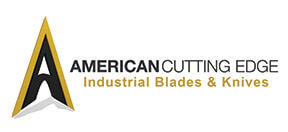American Cutting Edge Blog
-
Knife Material and Hardness With over 60 years in the business of manufacturing blades and industrial knives, American Cutting Edge supports various industries in the cutting and chopping of fiber, textiles, and composites. Our experience and in-depth knowledge enables us to supply the highest quality stock and custom blades to the fiber and fiberglass industry.
“It takes 20 years to build a reputation and five minutes to ruin it. If you think about that, you'll do things differently.” – Warren Buffet
One of our long-term customers, a global manufacturer of fiberglass components, approached us with an opportunity to support them with a solution to provide a precise cut on fiberglass. Because the fiberglass being cut was exceptionally fine and easily frayed, the blade had to maintain a sharp edge and provide a clean cut over time.
The goal was to provide our valued partner
-
This week we're taking a deeper dive with ACE's director of supply chain management, Dan Brownfield, who will walk us through the basics of supply chain management. With over 35-years of supply chain experience, Dan brings a wealth of knowledge and business experience to ACE. We're glad he's part of our team and appreciate his expertise.
Breaking down the definition of supply chain management, it's the planning, sourcing, securing, and delivery of products for customers. While that certainly sounds simple enough, there's a lot to it. And, it has a significant impact on the ACE customer experience including pricing and delivery of products.
During his tenure in the field of supply chain management, he's seen a lot of changes including going from manually tracking of shipments and information using spreadsheets to full supply chain software programs that automate reporting.
-
There's a lot of talk about supply chain management (SCM) and how it's critically important to the success of a business. Touching every aspect of business operations from logistics and purchasing to information technology, an organization's supply chain and how it's managed can make or break a company.
What exactly is a supply chain and what's so critical about the role it plays in business? Most importantly, why should you care about your vendor's supply chain?
The simple definition of SCM is that it is the handling of the entire production flow of a good or service — starting from the raw components all the way to delivering the final product to the consumer. Much more than a purchasing and negotiation function, SCM is the design, planning, execution, control, and monitoring of supply chain activities with the goal of
-
There’s a lot to be said for simplification whether you’re thinking about clearing the clutter in your office, streamlining your schedules, or committing to meal planning at home. The idea of simplifying boils down to making life easier. If you’ve ever consolidated your bills or cleared out items by donating to charity, you’re familiar with how effortless things can be when they are simpler.
This concept extends to manufacturing operations of all kinds when organizations look at their vendor and procurement policies.
“Simplicity is the prerequisite for reliability.” – Edsger Dijkstra
What is Vendor Consolidation?
Vendor consolidation is a cost-reduction strategy that involves reducing the number of suppliers for your business to a few or in some cases even one.


